Growing eggplants can be deeply satisfying — those glossy purple fruits not only look stunning in the garden but also make for delicious meals. However, many gardeners struggle to keep their eggplant plants productive throughout the year. The good news? With the right watering technique, you can enjoy continuous harvests without having to replant every season.
This guide explores a clever and sustainable watering method that keeps eggplants healthy, vigorous, and fruiting year-round. Inspired by innovative farmers, this approach can be done right at home — no fancy equipment or large plots required. Let’s dive into how you can replicate it and transform your eggplant garden into a nonstop producer.
Understanding the Needs of Eggplants
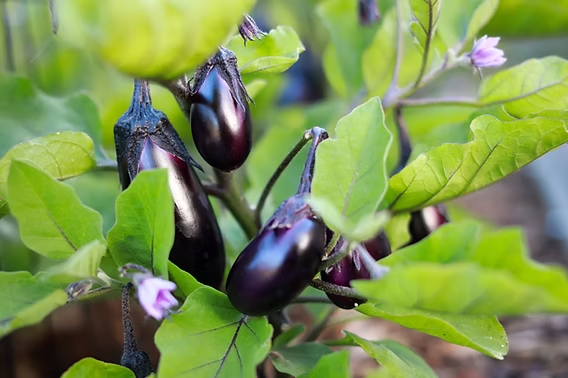
Before getting into the special watering method, it’s essential to understand what eggplants love. These heat-loving vegetables thrive in warm weather, plenty of sunlight, and well-drained, nutrient-rich soil.
However, the real key to success lies in consistent moisture. Eggplants don’t like extremes — too little water causes flowers to drop, while overwatering leads to root rot. The trick is finding the perfect balance: keeping the soil evenly moist without being soggy.
That’s where this innovative watering method comes in.
The Smart Watering Concept
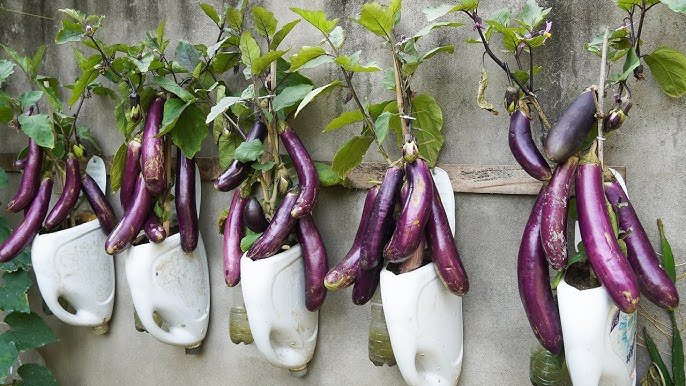
Traditional surface watering often leads to uneven moisture — water quickly evaporates, and the deeper roots remain thirsty. The method used by experienced farmers involves deep and controlled watering, delivering moisture directly to the root zone.
Here’s the idea: instead of flooding the soil from above, you create a sub-surface watering system that supplies water gradually, keeping roots hydrated and strong. This not only reduces water waste but also encourages eggplants to develop deep, sturdy root systems that support year-round growth.
How to Set Up the Continuous Watering System
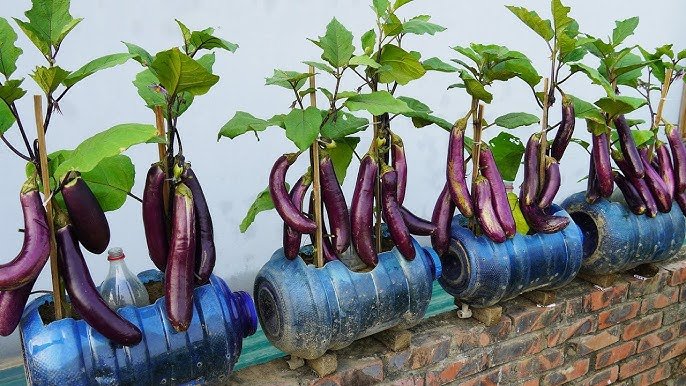
You can easily replicate this method at home with a few simple materials.
What You’ll Need:
- Large containers, grow bags, or garden beds
- A few plastic bottles or PVC pipes
- Organic compost or manure
- Quality soil mix
- Mulch (straw, dry leaves, or coco peat)
Step 1: Prepare the Soil
Mix garden soil with compost or organic manure to ensure it’s rich in nutrients. Eggplants are heavy feeders and benefit from nutrient-dense soil that supports continuous flowering and fruiting.
Step 2: Create a Subsurface Watering Tube
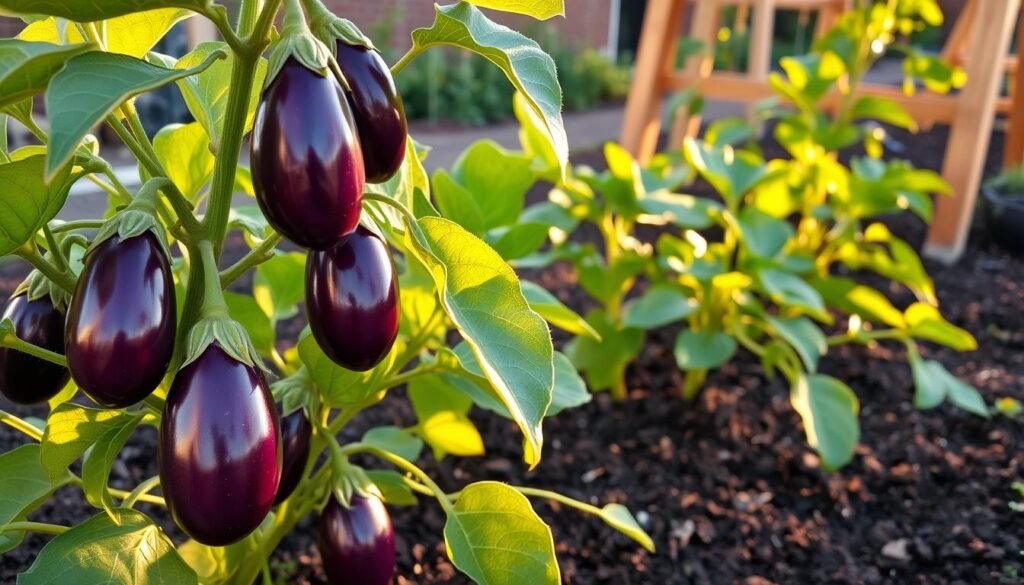
Take a plastic bottle or PVC pipe about 1 to 2 inches wide and 8–10 inches long. Drill several small holes on the sides and bottom of the pipe or bottle.
Place this tube vertically in the planting area, ensuring that the perforated section sits below the root zone while the top remains above the soil surface.
When you pour water into the tube, it seeps slowly and directly to the roots — no evaporation, no water waste, and no surface compaction.
Step 3: Plant Your Eggplants
Plant your eggplant seedlings around the watering tube, spacing them about 18–24 inches apart. Water each planting hole lightly to help the seedlings settle.
Step 4: Add Mulch
Cover the soil surface with organic mulch. This locks in moisture, keeps the soil temperature stable, and prevents weeds.
Step 5: Water Efficiently
Pour water into the tube every few days, depending on the weather. The deep watering encourages strong root development, while the mulch prevents rapid evaporation.
The result? Moist soil around the roots at all times — the perfect condition for continuous growth and fruiting.
Why This Watering Method Works Wonders
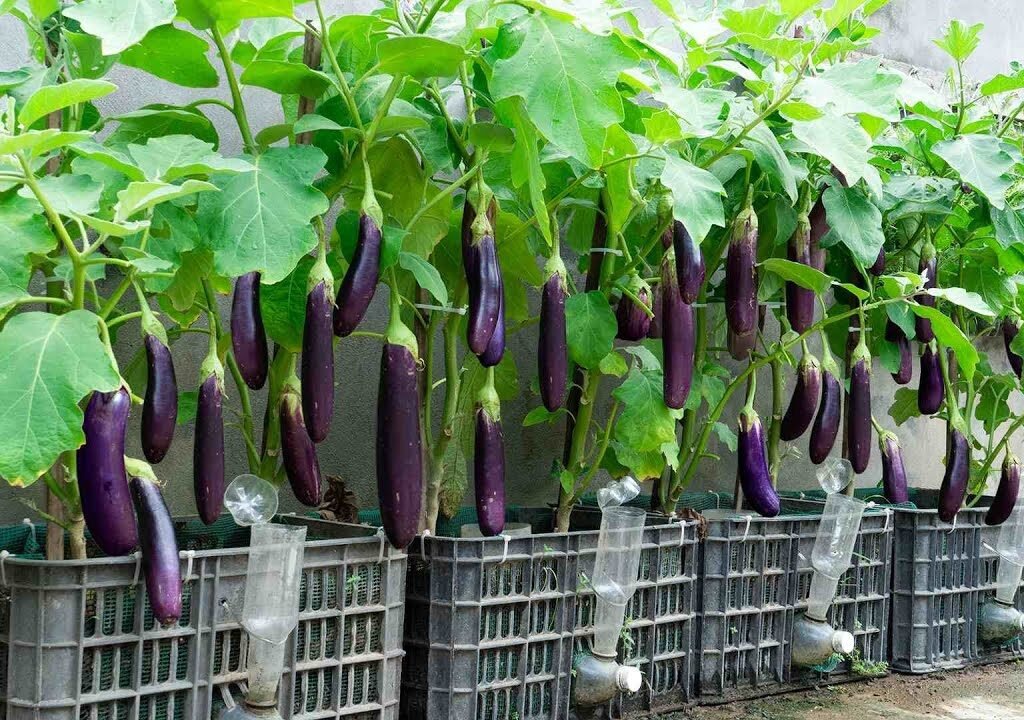
This technique isn’t just about convenience; it changes how your eggplants grow and produce.
1. Encourages Deep Root Growth
By delivering water directly to the lower soil layers, the roots grow deeper instead of spreading out near the surface. Deep roots make plants more resilient to heat and drought.
2. Reduces Water Waste
Traditional watering methods can waste up to 50% of water due to evaporation and runoff. This method minimizes loss, ensuring every drop reaches where it’s needed most.
3. Prevents Fungal Diseases
Watering from below keeps the foliage dry, significantly reducing the risk of leaf diseases and fungal infections that thrive in wet conditions.
4. Promotes Continuous Fruiting
Consistent moisture and steady nutrition mean the plant never experiences stress. Eggplants can then focus their energy on producing flowers and fruits continuously throughout the year.
5. Improves Soil Health
Deep watering helps beneficial microbes thrive in the soil. These microbes aid in nutrient absorption, making your plants stronger and healthier.
Seasonal Care for Year-Round Harvests
To maintain productivity, combine the watering method with seasonal adjustments:
Spring and Summer
- Eggplants love warmth. Keep the watering frequency moderate but consistent.
- Feed plants every two weeks with compost tea or liquid fertilizer.
- Remove any damaged or diseased leaves to improve airflow.
Fall
- As temperatures drop, reduce watering slightly.
- Add extra mulch to retain soil warmth.
- Prune older stems to encourage new shoots.
Winter (in mild climates or greenhouses)
- Protect plants from frost by covering them with row covers or moving them into a greenhouse.
- Water sparingly — just enough to keep soil slightly moist.
- Lightly prune to remove dead growth and keep the plant compact.
With proper protection and steady care, your eggplants can continue to bear fruit even during the cooler months.
Bonus Tip: Combine with a Fertigation System
To take it one step further, you can use the same watering tube for feeding. Dissolve organic fertilizers (like seaweed extract or compost tea) in water and pour it through the tube.
This fertigation technique delivers nutrients straight to the roots, boosting flowering and fruiting without the risk of over-fertilizing.
Troubleshooting Common Issues
Even with a great watering method, challenges can arise. Here’s how to handle them:
- Flower Drop: Often caused by inconsistent watering or temperature stress. Make sure soil moisture is even and temperatures remain stable.
- Small Fruits: Indicate low nutrition — feed with compost tea or organic fertilizer.
- Pests: Watch out for aphids and flea beetles. Use neem oil or insecticidal soap to manage infestations naturally.
- Yellow Leaves: Could be due to overwatering — reduce frequency slightly.
Sustainability and Savings
This watering method doesn’t just increase yield — it also saves water, reduces the need for chemical fertilizers, and makes your garden more sustainable. For small-scale farmers and home gardeners alike, it’s an affordable way to achieve commercial-level productivity.
Imagine harvesting baskets of shiny, fresh eggplants month after month, all thanks to a simple DIY watering system that costs almost nothing to set up.
Final Thoughts
The secret to year-round eggplant production isn’t just about the right variety or fertilizer — it’s about mastering water management. By adopting this simple but powerful subsurface watering method, you can maintain healthy soil, strong roots, and continuous fruiting.
Whether you grow eggplants in containers, raised beds, or backyard plots, this technique ensures that your garden stays lush, productive, and sustainable.
So, next time you’re planning your vegetable patch, remember: it’s not how often you water, but how smartly you do it that makes all the difference.
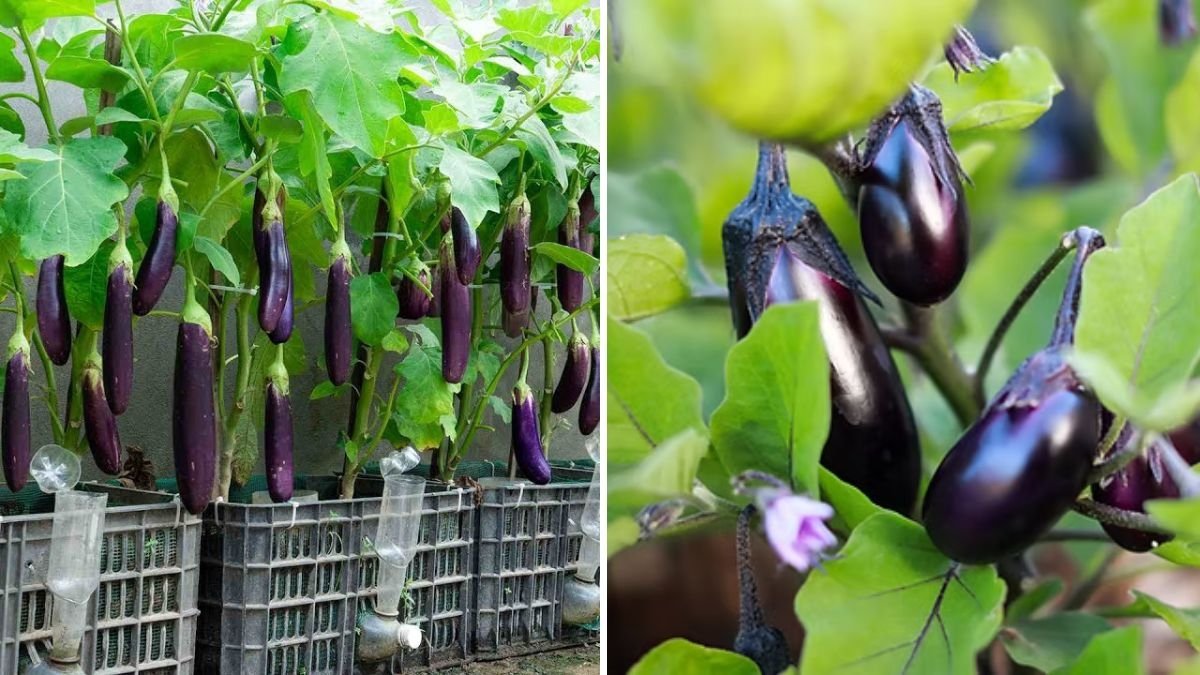




Leave A Comment